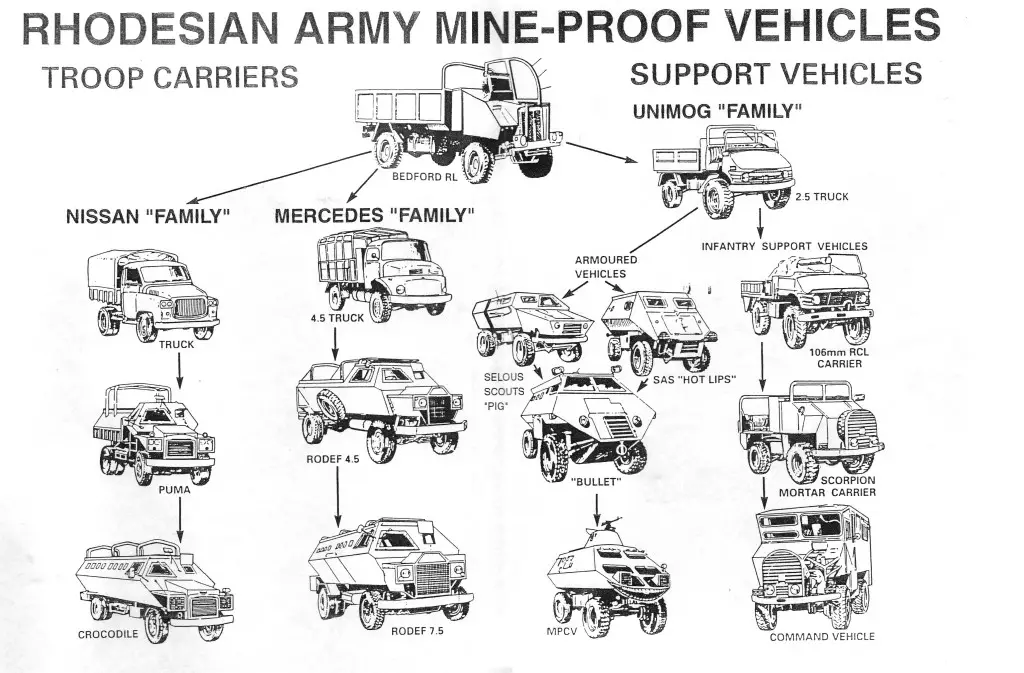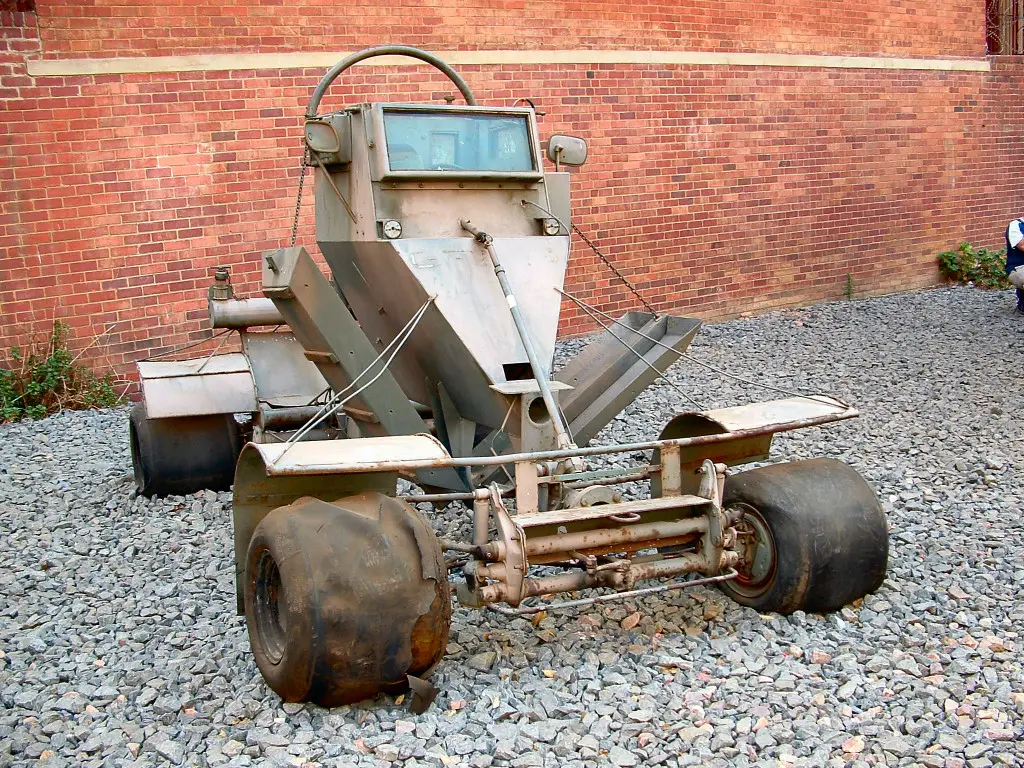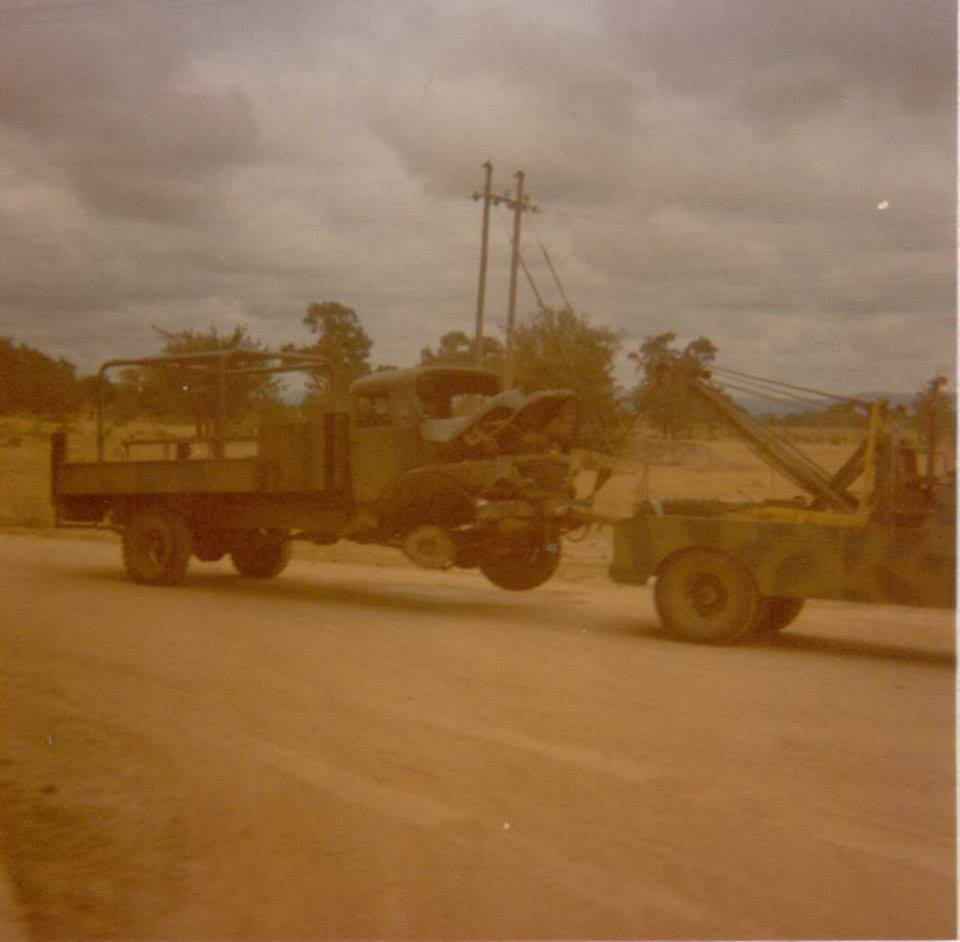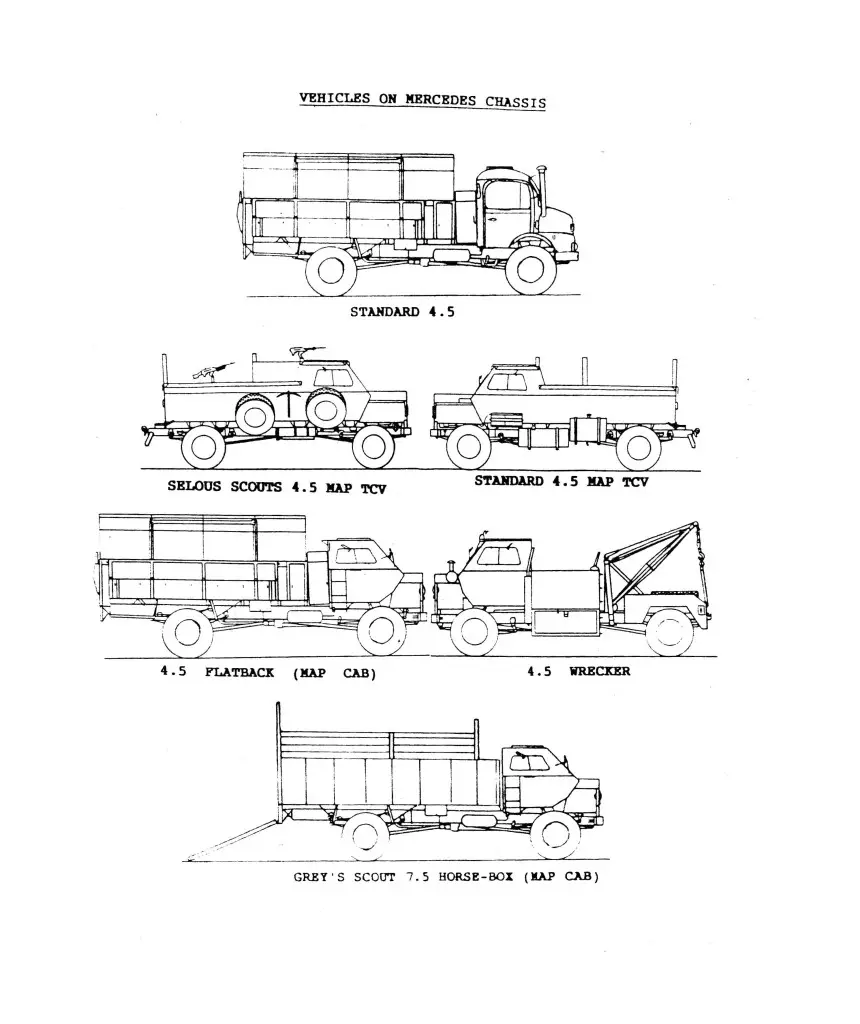We’ve mentioned before that long before the US decided it needed vehicles that could survive mines (or, technically, whose crews could survive mines — one mine FOOM and anything that came on its own wheels is leaving on something else’s). the Rhodesian Army invented, developed, and mastered the concept, on a shoestring budget.
The vehicles were called Mine Ambush Protected or MAPs, and a confusing variety were improvised and made in unit workshops and national steel-working firms from about 1972 to the end of the war.
These vehicles might be entirely lost to history, if not for two things: the cruelty & corruption of the Mugabe regime which produced a global Rhodesian diaspora; and the obsessive-compulsive tendencies of combat-vehicle modelers, who pursue the most minute details with a singlemindedness that Javert himself could only envy.
Between the proud Rhodies, wherever they may fetch up these days, and the fiddly autism-spectrum anoraks who seem to breathe a heady mixture of detail and toluene, plenty of information about Rhodesian vehicles is at hand (and more is emerging regularly).
The best place to begin is wargamer John Wynne Hopkins’s page. He has done an intensive study of these vehicles.
The Problem
This photo illustrates the problem:
The slick-sided Mercedes 4.5 ton truck hit a land mine enroute out, and is being towed back to base. Hopkins (from whom we light-fingered the photo) explains that this is a convoy of 5 Independent Company, Rhodesian African Rifles, enroute back from a trip in support of the elections for the brief (and internationally unrecognized) compromise Zimbabwe-Rhodesia government in January 1979. Their efforts were futile: American President Jimmy Carter and British Foreign Minister Lord Carrington had agreed to support only “one man, one vote, one time” elections as demanded by the nominally Communist kleptocrats who led the two guerrilla movements.
5 Indep Coy RAR convoy forms up at Derowa Mine for ‘Muzorewa’ elections Jan 1979. … Unfortunately, one of these pookies [mine countermeasures vehicle — Ed.] could not be spared on the journey out, with the result that the 45 seen being towed hit a mine (2nd in the convoy), as did a mobile surgical unit second from back. No casualties, thank goodness, although the driver of the 45 was severely shaken – the anti-mine armour had only been fitted the day before to an almost new vehicle.
Of course the driver was shaken! The mine went off right in front of him (vehicles in Rhodesia were right-hand drive).
Anti-mine armor on vehicle chassis or floorboards was an interim step; the definitive Rhodesian vehicles were full MAPs, but there were never enough to eliminate the use of slick trucks.
There are basically two classes of Rhodesian MAPs: transport/utility vehicles, and mine-clearing vehicles.
Mine Protected Transports
As you might expect from the improvisational, highly decentralized Rhodesian Army, a wide variety of vehicles were made, with some of the more exotic and lower-density ones appearing in elite forces’ motor pools.
We despaired of ever sorting these out, but Don Blevin came to our rescue (via Hopkins) with a great chart of the main variants, based on the three chassis they were produced on: the Nissan 2-ton commercial truck, the Mercedes 4.5 ton, and the Mercedes 2.5 ton Unimog.

We joined the two sides of the drawing and cleaned it up a bit. Don Blevin illustration. It embiggens thunderously.
This chart makes it look nice and neat. It wasn’t, though, because there were modifications and special purpose vehicles like weapons carriers and wreckers. Here’s some more Mercedes variants (same source):
And if you have a hard time keeping the Mercedes family straight, wait till you check out the utility Unimogs.
As you’ve seen from the initial image, a truck could take a TM-46 hit and still be survivable — it was luck of the draw based on where the blast took the vehicle. The truck in that picture was probably soon repaired and back in the field.
Mine Countermeasures Vehicles
If the Navy can use minesweepers, why can’t the Army? That simple question lay at the moment of conception of the Pookie, the principal Rhodie mine countermeasures vehicle. (There were others, built on the same principle.

A somewhat forlorn Pookie on display. From a photo walkaround by Steve Barrow here.
There were never enough to keep earthen roads open, so vehicles ran in convoys — another lift from naval experience). The Pookie’s equivalent of a naval minesweeper’s nonmagnetic hull was its very low ground pressure, too low to trigger an AT mine. It could trigger anti-personnel mines, and anti-tampering devices attached to the secondary fuze wells on AT mines.
Between 1972 and 1980, it is estimated that more than 600 people were killed and thousands more injured by landmines on hundred of kilometres of roads and runways in Rhodesia. The toll would have been much higher but for the invention of Pookie, a small detection vehicle designed to travel ahead of military and civilian convoys and light enough not to detonate anti-tank mines.
Pookie, originally designed and developed by Ernest Konschel, an engineer and farmer from Rhodesia, was constructed on a lightweight chassis and carried a one-person armour-plated cab. The cab had a V-shaped undercarriage designed to deflect any blast away from the driver and to combat centre blast mines. The wheels were positioned some distance from the cab, again to protect the driver in the event of detonation by offsetting the seat of explosion, and they were housed in Formula One racing tires, apparently bought in bulk from the South African Grand Prix. Wide with low pressure, they exert a minimum ground force. The vehicle was propelled by an engine from a Volkswagen Beetle that was capable of taking Pookie to mine detection speeds of up to 60 kilometres per hour. Two drop-arm detectors were mounted left and right and equipped with a detection system that bounced magnetic waves into the ground as well as an acoustic signal to indicate metal.
On first trials, Pookie detected every metallic mine and went on to prove itself both reliable and safe. Even though Pookies did detonate anti-personnel mines and several booby-trapped anti-tank mines in action with the Rhodesian army, this was only at the cost of new wheels and rim replacements, but no serious human casualty.
Only one Pookie operator lost his life during the vehicle’s long service. His tiny cab was hit by a lucky RPG-7 shot, and his number was up. Pookies shrugged off small arms, and a tank mine detonation only disabled the vehicle, blowing off one or more sacrificial wheels, but the operator survived — shaken and temporarily deaf, usually. None of the Pookies ever ditecyly tripped a TM-46, the Soviet anti-tank mine that was the Rhodesian terrorists’ primary weapon, but they did .
The initial detector used coils that were contained in long cylinders that could be lowered parallel to the surface of the road, or raised for transport.
The Pookie Today
The source of the above quote was this feature in a counter-mining journal by Willie Lawrence, which goes into detail about how wartime Pookies have been rehabbed and updated with ground-penetrating radar for detecting the improved (if that’s the word) anti-magnetic mines that international mine-clearing groups are dealing with today.
And the concept has been extended today with countermine vehicles like the Meerkat (caution, many spammy popups at that link). But the Pookie stands out as an example of brilliant simplicity, enabled as much as its designers were restricted by the fact that the Rhodesian Army had no choice but to run lean and on a shoestring.

Kevin was a former Special Forces weapons man (MOS 18B, before the 18 series, 11B with Skill Qualification Indicator of S). His focus was on weapons: their history, effects and employment. He started WeaponsMan.com in 2011 and operated it until he passed away in 2017. His work is being preserved here at the request of his family.



18 thoughts on “Rhodesian Mine Ambush Protected Vehicles 1975-80”
The Pookie’s front suspension also appears to be from a Volkswagen Beetle.
That’s correct. The Pookie had VW Beetle running gear at both ends. The new GPR version swapped out the Beetle drive parts for a hydraulic drive and is much slower (<10km/h) but has to be for the ground-penetrating radar to work. The original Pookie could clear tank mines at a much higher speed so they’d lead convoys. The GPR also has a much narrower swath than the magnetometer used to hunt TM-46s back in the 1970s.
And the US Army of the 1960s, faced with a similar environment in Southeast Asia, did… Jack and shit.
There is something seriously wrong with our military culture, here in the US. Like Sears confronting the internet, we should have been the lead element in constructing mine-protected vehicles. We had the most resources, the supposed finest minds in the Western world working for our military… And, like Amazon, it was someone else that developed the concept. With Sears vast experience in retail and mail order, it is mind-boggling to contemplate that they were and are not the juggernauts of the internet retail world. Instead, Jeff Bezos ate their lunch out from under them.
The situations are analogous. I and others spent the 1980s and 1990s trying to get the Army topay attention to the issue, to no avail. I was actually told that we didn’t want to develop armored route clearance equipment, because if we had the capability, someone might expect us to do it… And, we didn’t want the mission. Those are the literal words of a Reserve officer who held a fairly high position in Combat Developments as a civilian at the Engineer School.
All I can say is that we really need to gut the entire sorry edifice, and start over.
Cool, when I saw the headline I thought you were going to be writing about the mine protected Land Rovers with the big circular roll bars (so they landed upright) like this one https://c1.staticflickr.com/5/4130/4973616606_48cd72f55c_b.jpg
A big Land Rover dealer in England had one for sale a few years ago. The Pookie is a lot more interesting as an original invention.
Joe, the Land Rover in your image was of a type first used in Aden in the late sixties.
http://www.thinkdefence.co.uk/from-scimitar-to-fres-to-ajax/from-scimitar-to-fres-to-ajax-the-sixties-and-seventies/
They were then used again in 1980 for Operation AGILA in Zimbabwe/Rhodesia, the image above appears to be from that operation
Pookie figures in the book “Charlie Tango.”
I’d like folks to know that John Hopkins is not just some fantasy “wargamer”, he was a serving officer in A Coy, 1st Bn RAR. He joined The Battalion just after the battle of Entumbane and was involved in some of the shootouts in the follwups. He is also a world class artist and his oil paintings of the bush war are the best I’ve ever seen. If you were there his artwork brings it all back, even the sounds and smells. I should also mention that, although mild mannered and polite to a fault, he’s one of the toughest little bastards I’ve ever known.
For what it’s worth. Wafa Wafa. Wasara Wasara.
That Pooky is a really ingenious design. They used a Beetlebug kingpin front torsion bar unit. Can just see a CV Axle in the back, they must have used the transaxle and torsion tunnel in the back too.
Cant get more basic, reliable, and stout than that. You could use half ton of armor at least and not over tax the drivline and suspension.Easy as shit to repair also.
Somebody was using the old knoggin’.
Talk about home workshop armor!
The Rhodesians even had a railroad clearance MAP, with a contraption to rotate the vehicle 180° on the track to switch which way the front of the vehicle was pointed.
http://www.geoffs-trains.com/images/Copy_of_DSCN0393.JPG
They’re not worth a trip on its own, but Bulawayo, Zimbabwe has a couple of hidden gem museums, including the Rhodesian National Railroad museum, with an example of a railroad MAP. If you’re in the neighborhood, stop by.
I’ve been to the factory where the Australian Bushmaster Protected Mobility Vehicle is made, seen the CAD models of men inside accelerating and decelerating under the force of a detonation, seen footage of actual vehicles being blown up etc etc.
If I was going to drive over a mine I’d want to do it in a Bushmaster.
Disclaimer…I have no involvement with those folks other than admiring their product. They’re great engineers.
And if anyone is interested, Google for “Hawkei” to see what our new Humvee equivalent looks like. Another great vehicle from the same crew.
I bet the Hawker doesn’t cost $400k either. Australia, apart from gun laws a very sensible place. (Also… Australian troops are great guys, it was great having them along in Afghanistan).
The Unites States Army decided it would cost too much to bring back all it’s MRAPS from Afghanistan.
They also determined that the Afghan National Army would be unable to maintain them.
So at least 800 Mine Resistant Ambush Protected vehicles, costing $1million each, were shredded and sold as scrap on the Afghan market.
Doc, don’t even get me started on the special IG findings. The MRAPs were pocket change.
http://sigar.mil/
Read it and weep.
Have wrote about this subject a few times including some of the South African/Rhodesian aspects
http://www.thinkdefence.co.uk/2012/07/ieds-mines-route-clearance-and-talisman/
It never ceases to amaze me how militaries the world over are expert at forgetting lessons they have learned before, like any large organisation I guess.
We’re also extremely reluctant to accept the lessons our allies have learned. We have a slightly better track record at cribbing good ideas from enemy forces.
Thanks for another great article. The vast amount of topics you cover and the detail keeps me coming back.
And to all the great commenters on here, thank you. I have learned just as much from the comments as I have from the original post.
Outstanding article. I might just have to build a Pookie for a farm vehicle. Why not?
***And the concept has been extended today with countermine vehicles like the Meerkat (caution, many spammy popups at that link). But the Pookie stands out as an example of brilliant simplicity, enabled as much as its designers were restricted by the fact that the Rhodesian Army had no choice but to run lean and on a shoestring.***
Two or three bits of speculation come to mind: Since the Rhodesian Armoured Cars regiment operated a squadron of eight Polish T55L tanks [by way of Uganda via Siuth Africa] it is interesting to wonder what countermeasures for the TM46/TM57 AT mines might have been developed had the tank utilization not appeared in the Rhodesian toybox so near the end of things. Indeed, there’s grand room for speculation as to how the Rhodesians might be handling similar threats had their politicians not sold them out and their counterinsurgency efforts had been extended thirty-five years- plus to the present day.
And, along the same lines, had light tracked vehicles captured on cross-border ops or deniable foreign military assistance been available and adapted to the Pookie role, what might have been; think a very low-pressure BMD/BMP or very lightened US M114 or M113 APC set up for wired or wireless remote control.
***Use it up, wear it out, make it do or do without*** -US depression-era motto adopted by the Rhodesians, circa mid-1970s.